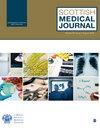Systematic reviews and data analyses: Guide to clinical practice and research.
IF 1.4
4区 医学
Q2 MEDICINE, GENERAL & INTERNAL
引用次数: 0
Abstract
This issue of the Scottish Medical Journal has a few systematic reviews and critical analysis of literature in many areas. We feel that for clinical practice, evidence is essential and systematic reviews summarize evidence for us through a scientific synthesis. The range of topics of systematic reviews.1–8 in this issue has been wide and not focusing on a particular problem, however, publications should generate awareness, some glimpse into methodology and associated discussions around evidence-based medicine. Evidence-based medicine is a combination of individual clinical knowledge and the results of clinical trials. And as a doctor, there is a great need for some strong evidence to support his diagnosis and treatment and all aspects of it. Due to the proliferation of medical literature and the limited time available to clinicians and researchers, systematic evaluation was born. The systematic evaluation aims to obtain stronger clinical evidence for clinical decisionmaking by systematically searching medical databases. So high-quality systematic reviews are needed. The quality of a systematic review depends on the number and quality of the studies included and the presence of heterogeneity. Choosing a good topic is the beginning of preparing a systematic review. Once you have chosen a topic, you can start with the Protocol. At this stage, most journals recommend that we use The Preferred Reporting Items for Systematic reviews and Meta-Analyses (PRISMA) to assist in the writing of our articles. PROSPERO (http://www.crd.york.ac.uk/prospero/) is a well-known platform for registration of system overviews, so it is best to make a registration on such a platform. And check if anyone has done any relevant research to avoid duplication. In particular, for clinical questions, authors should use the “Participants, Interventions, Comparisons and Outcomes (PICO)” to analyze the question before starting the process of conducting a systematic review. The search strategy is mainly to link some keywords by means of ‘and’ and ‘or’ to achieve a search of the relevant literature. Then it is a matter of selecting the appropriate database for the search, e.g. PubMed, Web of Science, Embase, Cochrane Library, CENTRAL, Cinahl, and LiLacs., etc. Searches can be conducted within them using keywords and appropriate filters such as time frame, language, type of literature, etc. It is recommended to search using multiple databases to increase the coverage of the literature. Before literature screening, screening criteria should be determined, including inclusion criteria and exclusion criteria. The selection of literature is divided into 2 parts, firstly by determining the type of literature and reading the abstract to determine whether the literature meets the search requirements to exclude some literature, and secondly by reading the full text of the article to determine whether the selected literature meets the requirements and whether there is a lack of data to determine the final included literature. Literature screening is generally carried out by two people independently, and discussion and verification are carried out at the end. Researchers need to collect information and data about the articles included, such as authors’ names, years of publication, sample size, study design, instruments used, main results, etc. to provide a high level of overview and comparison of the articles. Quality assessment is an important thing to do when we are not sure of the quality of the articles to be included. We first need to determine the criteria for the assessment. Different types of systematic assessment can be carried out with different types of assessment models, and the results are eventually expressed in the form of tables or images. Before meta-analysis, it is necessary to determine whether the included articles are heterogeneous and biased. Heterogeneity can be directly judged by forest plot, and publication bias can be judged by funnel plot, etc. For articles with high heterogeneity, subgroup analysis, meta regression and sensitivity analysis can be used to analyze the heterogeneity of articles. If there is a系统综述和数据分析:临床实践和研究指南。
本文章由计算机程序翻译,如有差异,请以英文原文为准。
求助全文
约1分钟内获得全文
求助全文
来源期刊

Scottish Medical Journal
医学-医学:内科
CiteScore
4.80
自引率
3.70%
发文量
42
审稿时长
>12 weeks
期刊介绍:
A unique international information source for the latest news and issues concerning the Scottish medical community. Contributions are drawn from Scotland and its medical institutions, through an array of international authors. In addition to original papers, Scottish Medical Journal publishes commissioned educational review articles, case reports, historical articles, and sponsoring society abstracts.This journal is a member of the Committee on Publications Ethics (COPE).
 求助内容:
求助内容: 应助结果提醒方式:
应助结果提醒方式:


